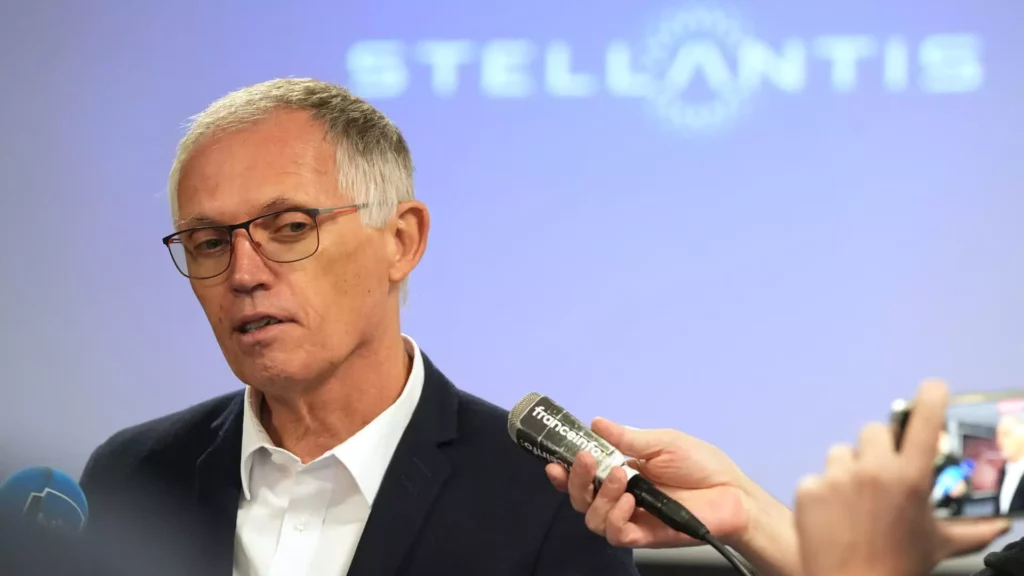In a surprising turn of events, Stellantis, the multinational automotive manufacturing corporation, announced the abrupt resignation of its CEO, Carlos Tavares. The decision, effective immediately, stems from an increasing divergence of opinions between Tavares and the company’s board of directors. This resignation signifies not only a leadership change at Stellantis but also highlights the challenges facing the automotive giant in an evolving market landscape.
Tavares took the helm of Stellantis when it was formed from the merger of Fiat Chrysler Automobiles and PSA Groupe in 2021. He was widely recognized for his role in shaping the company’s strategic vision and operational efficiency. His commendable tenure was marked by significant achievements that transformed Stellantis into one of the most profitable automotive manufacturers globally. However, the internal dynamics of the organization began to change, and issues that stemmed from differences in perspectives regarding company strategy started to surface.
This displacement is ostensibly linked to Tavares’ ambitious cost-cutting measures, aimed at restructuring the corporation’s framework for future growth. As Stellantis expanded its footprint across various markets, these changes were perceived as a mixed bag, garnering both accolades and criticisms. While Tavares focused on reducing operational costs—reportedly achieving approximately €8.4 billion in savings—internal stakeholders seemed increasingly wary of the implications of such aggressive strategies.
The announcement of Tavares’ resignation came against a backdrop of declining financial performance. Stellantis recently reported a staggering 27% decrease in net revenues for the third quarter and a significant contraction in vehicle sales globally. The decline was magnified in the U.S., which serves as the company’s principal revenue generator. Reports from industry analysts have noted the lack of new product investments and the inability to adapt to the competitive pressures of the electric vehicle (EV) market as contributing factors to the downturn.
As Tavares faced mounting pressure, both from market performance and internal factions, the board’s decision to accept his resignation reflects deeper discrepancies regarding the strategic direction of the company. Henri de Castries, senior independent director at Stellantis, articulated these sentiments by noting that alignment between the shareholders, board, and CEO had been fundamental to the company’s success. The emergence of differing views was clearly a pivotal factor that led to Tavares’ departure.
The automotive market responded swiftly to the news, with Stellantis’ shares plummeting as investors absorbed the implications of this leadership shake-up. Having lost approximately 43% of its stock value throughout 2024, investor confidence appears to have become increasingly tenuous. This critical juncture presents a significant challenge for the incoming leadership tasked with restoring stability and providing direction during an uncertain period.
The void left by Tavares’ resignation also opens a broader conversation about Stellantis’ long-term strategy in a shifting automotive landscape. With the rise of electric vehicles and sustainability necessitating a re-evaluation of traditional models, Stellantis must identify a successor who can navigate these complexities while simultaneously addressing the operational inefficiencies that have plagued the company.
Internal reports indicate that Tavares’ cost-cutting initiatives may have been excessive, leading to operational disruptions. The automotive veteran faced accusations from within the ranks of Stellantis, with some former executives arguing that the severe reductions in workforce and operational capabilities were injurious to morale and productivity. After the reduction of approximately 15.5% of the workforce, comprising around 47,500 employees since the end of 2019, the fallout may have adversely affected Stellantis’ image and its relationships with critical stakeholders—including unions and dealerships.
Union pushback has been especially palpable, as the United Auto Workers union called for Tavares’ removal amid layoffs and production constraints. Dealerships voiced concerns as well, highlighting challenges stemming from surplus inventories and insufficient corporate support. This broader discontent may illustrate the need for a recalibration in Stellantis’ approach to workforce management and stakeholder relationships.
Carlos Tavares’ unexpected resignation from Stellantis marks a transformative period for the automaker, underscoring the critical intersections of leadership, strategy, and operational efficacy. As the company embarks on the search for a new CEO, the path ahead remains fraught with challenges. Revitalizing investor confidence, addressing workforce concerns, and repositioning within a competitive landscape dominated by rapid advancements in technology will be vital for Stellantis’ future. How the board navigates this transition will ultimately define the corporation’s trajectory in the coming years.

